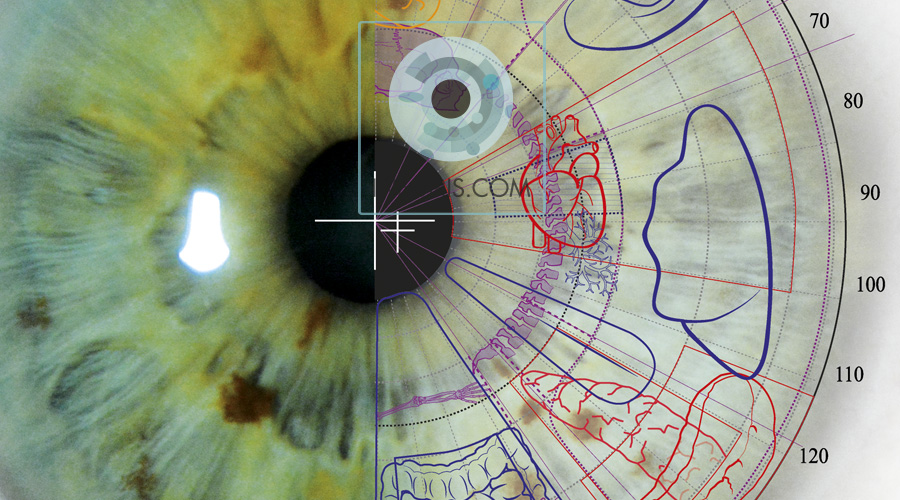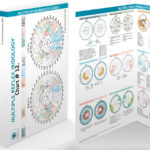The Multiple Reflex phenomenon describes how in the same area of the iris can manifest iridian signs providing information about weaknesses, alterations or predispositions of one, two or more parts of the human body.
This concept, so simple and complex to understand for some, is the result of years of research carried out by Fco. Javier Echavarren Lezaun and Javier I. Echavarren Otin.
The Multiple Reflex phenomenon is of such relevance that it represents a change of Paradigm in Iridology. In the same area of the iris we can find iridian signs that correspond to different alterations.
In our work we describe precisely at the level of degrees and crowns which is the Topographic Area (TA) of each of the parts of the body that we have located in the iris and which are the most representative iridian signs that we have found in each case. The description of all the Topographic Areas (TAs) in the map of the iris leads us to observe that the Multiple Reflex phenomenon occurs in almost all its surface. As a consequence of this fact, the iris map that only locates a single body part in each iris zone no longer makes sense.
Some iridologists are recognizing that they had observed this fact in some of the iris zones, but they have not yet reflected it in their topographies.
That is why we consider it important to publish the data of our study so that they can be studied and reviewed by all those who want to study Iridology. It is important to provide data that can be contrasted in clinical practice. Our publication “Principles and foundations of Multiple Reflex Iridology” in 2004 collects all this information. This book is in spanish.
The Multiple Reflex Iridology Iris Map consists of 12 maps synthesizing the results of our research. It allows to observe that there are TAs of parts of the human body that are partially or totally superimposed on the iris. This behavior in the projection and formation of iridian signs on the iris we have described within the Rules of Projection as Rule number 2: Multiple Reflex.
It is the type of iris sign with its location and characteristics that gives us this information. Interpreting this information is what Multiple Reflex Iridology does.
This concept is so important that without its understanding it is not only impossible to understand Multiple Reflex Iridology, but it is also impossible to advance in the development and evolution of Iridology.
Below we will observe a didactic example to facilitate its understanding. The Topographic Map of Multiple Reflex Iridology graphically represents this fact.
The images we are going to see correspond to the TAs of the heart, vertebral column, trunk muscles, respiratory tract and mammary glands. All of them have in common areas of the iris surface within Sector No. 2 (S2) of the left iris. These are images that I have previously shared on my Instagram account @multiplereflexiridology and on YouTube.
First we observe the TAs individually with their well-defined projection surface on the iris. Here are two examples of how the superimposition of these TAs on the S2 looks visually. In each of the images the text at the bottom appears in red indicating which TA corresponds to what we see. In the last two images the superposition of several TAs also appears the text in red to know which TAs are visible.
This first image of S2 corresponds in “Map no. 3: Tissues” to TA no. 12: vertebral column and TA no. 21: trunk muscles. Note that the corresponding TAs are shown in red at the bottom.
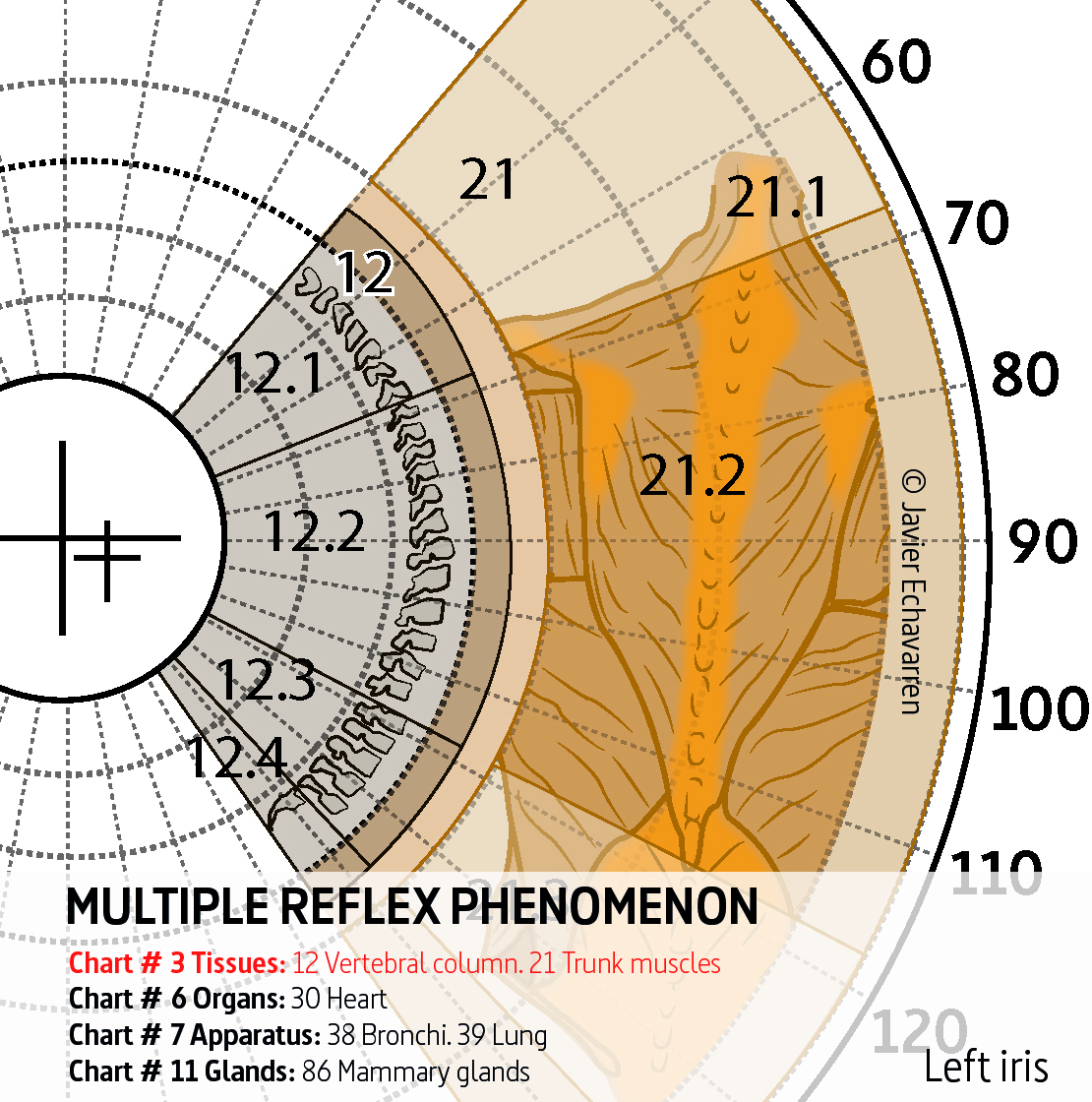
In this second image of the S2 of the left iris we observe the TA nº 30: heart corresponding to the “Map nº 6: Organs”. In the image appears in red the text of this part.

Third image of S2 of the left iris with TA 38: bronchi, TA nº 39: lung and TA nº 40: pleura corresponding to “Map nº 7: Apparatus”. In red the text of this part.
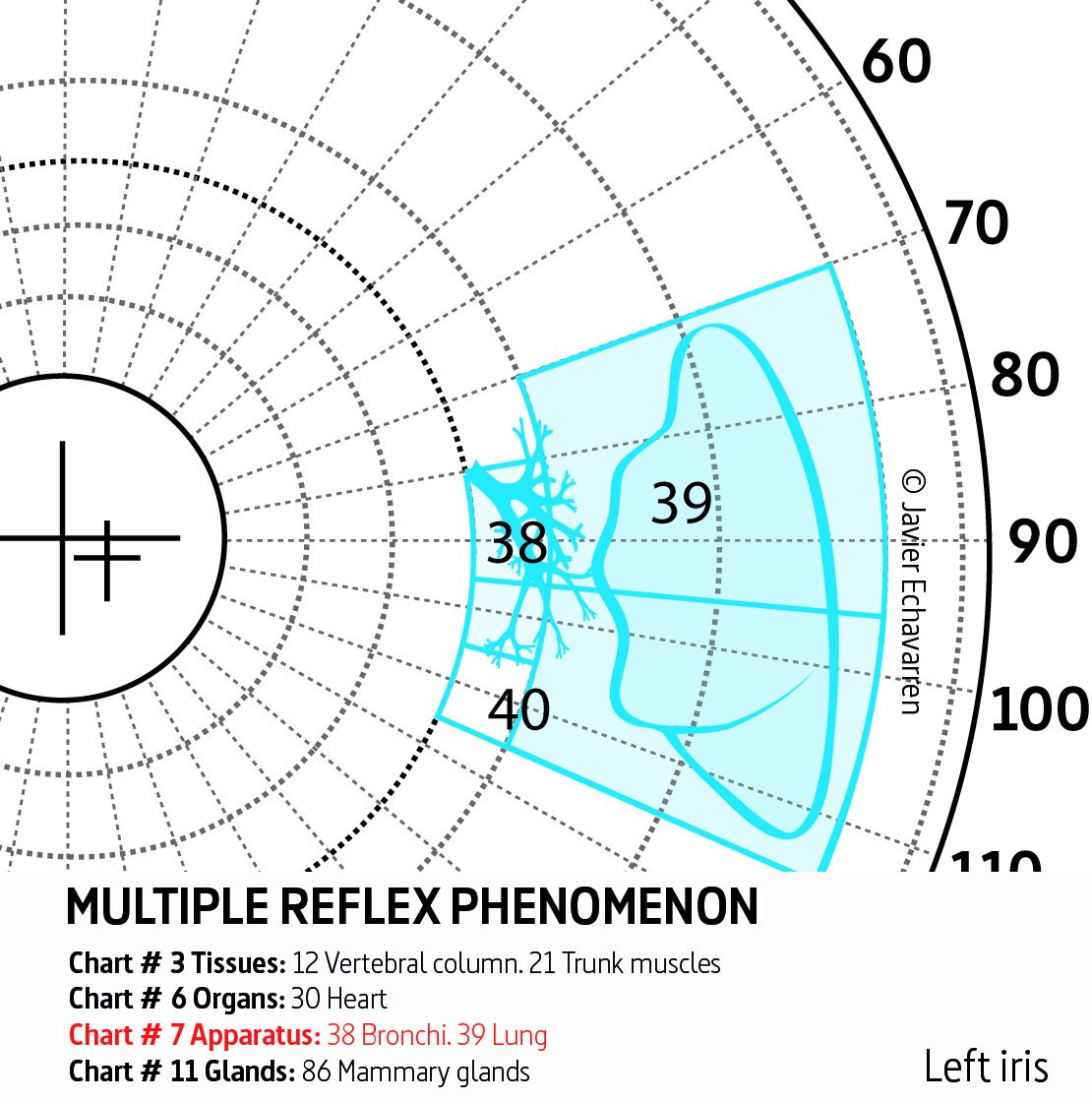
Fourth image of the S2 of the left iris with the TA nº 86: Mammary gland, corresponding to the “Map nº 11: Glands”. In the image appears in red the text of this part.
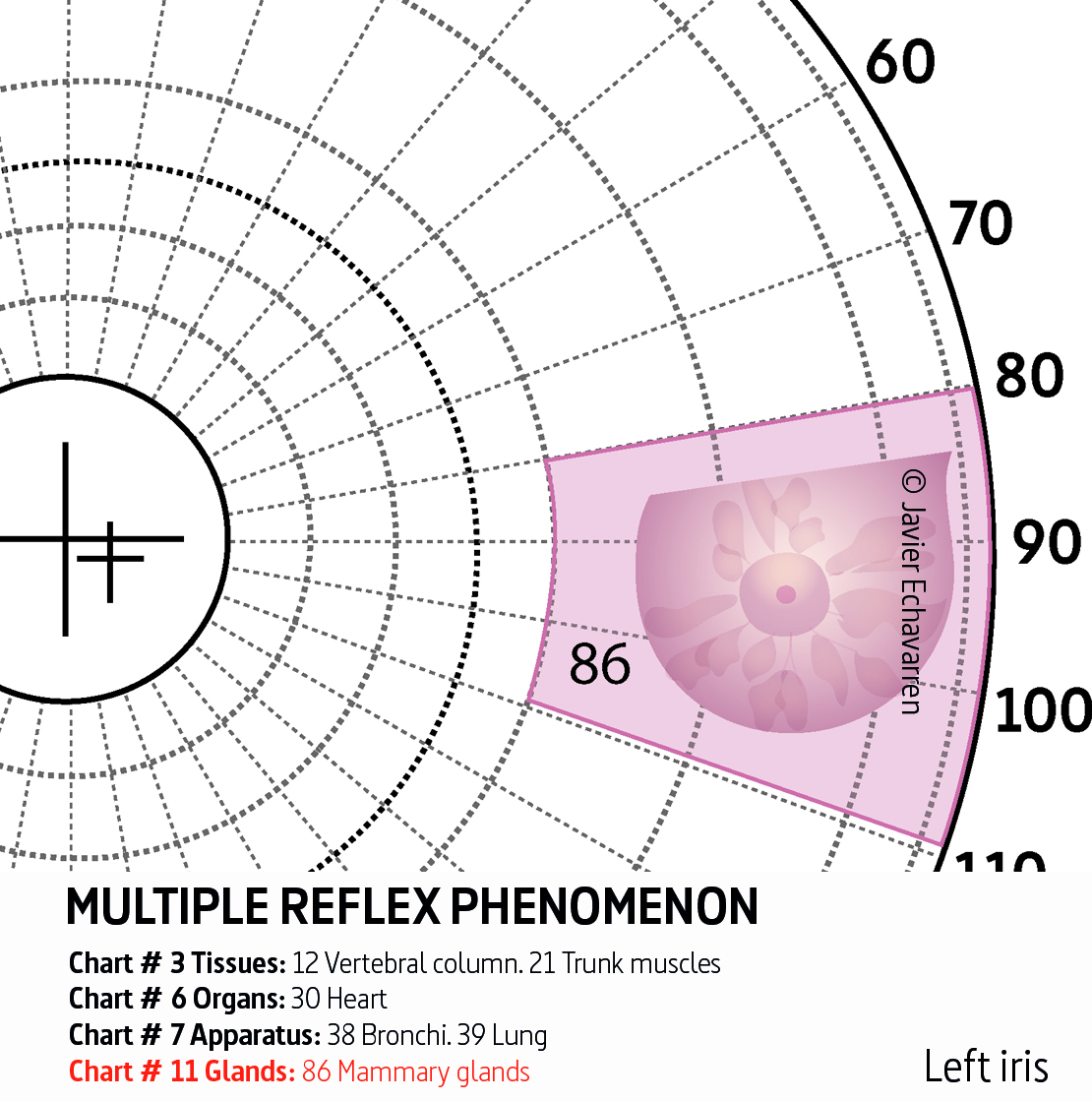
In this fifth image of S2 we begin to show how the superimposition of all the TAs shown in the previous images would look, with the exception of the trunk muscles. On this occasion we have removed them in order to better appreciate the detail of the rest of the TAs. This image is an example of the Multiple Reflex phenomenon.

Sixth image of S2 superimposing only the heart and airway TAs. Simpler example of the Multiple Reflex phenomenon.

In the following video we can see these images of the Topographic Areas superimposed on each other in a more visual way.
If you are interested you can find more information in our book “Principios y fundamentos de la Iridología de Reflejo Múltiple” Editorial Infoiris.
You can find this and other case study videos of Multiple Reflex Iridology in our YOUTUBE, INSTAGRAM and recently on TIKTOK @multiplereflexiridology.
© Multiple Reflex Iridology 2021. All rights reserved.




